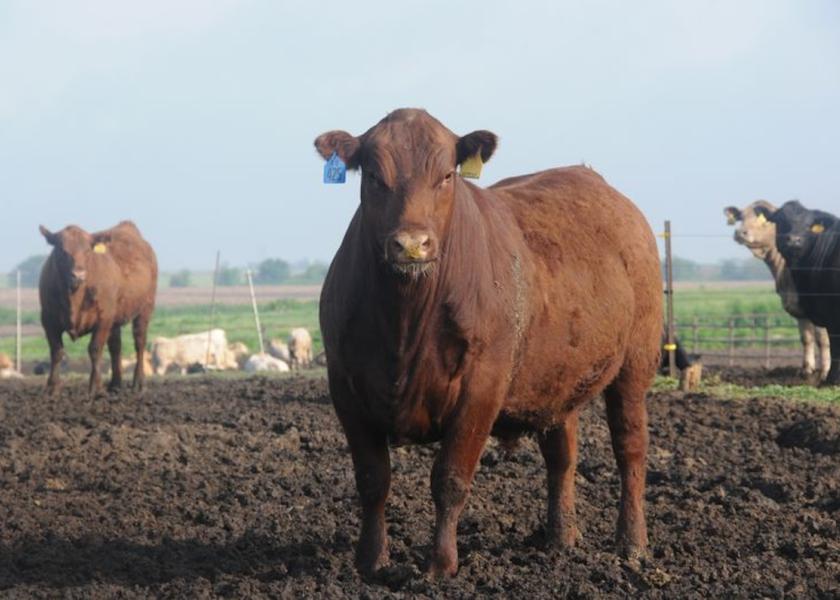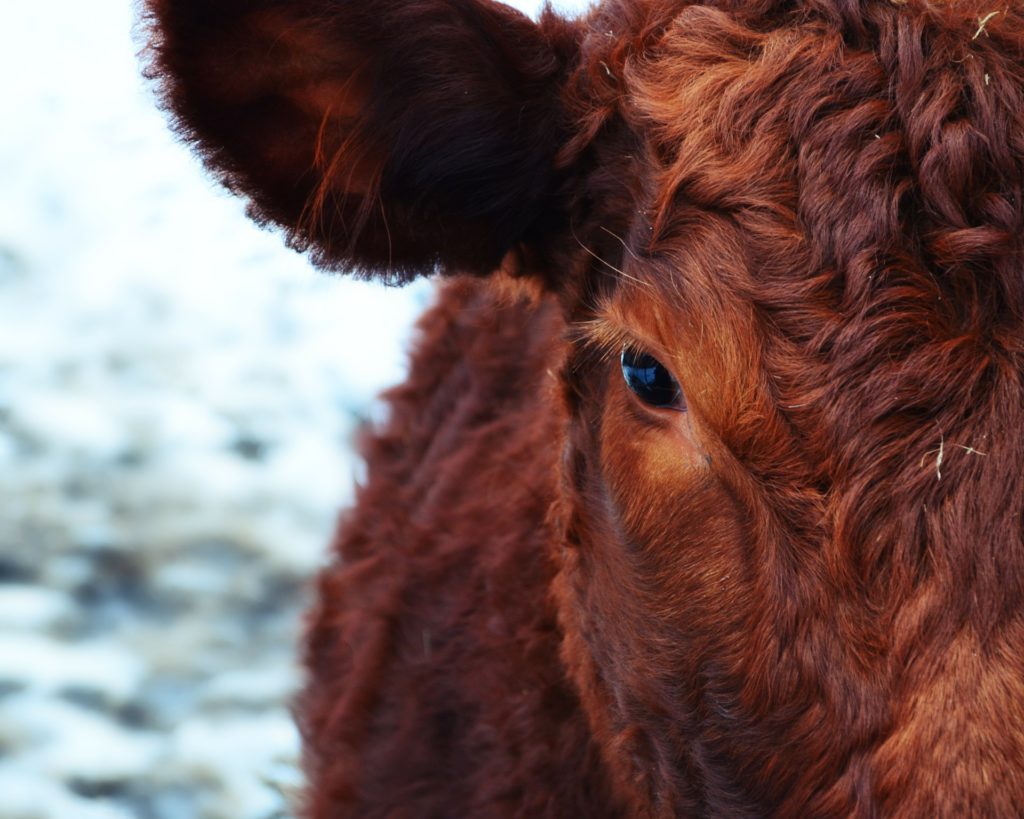A bull can look and act like he’s primed to produce offspring, but the question is can he deliver? Data show that one of every five bulls tested can’t and will fail a breeding soundness exam (BSE), according to the Society of Theriogenology, an organization dedicated to animal reproduction.
While those BSEs are important every year, significantly higher calf values this year dramatically increases the value of evaluations.
Turning out a subfertile bull this spring means some of your cows won’t get bred, and that means missing calves this fall that may be worth double what they were worth last fall. Possibly more important for ranchers using a subfertile bull is the fact many cows won’t be bred in a timely manner – during the first third of the breeding season.
The delay in settling a cow is costly, says Dr. Chance Armstrong, Auburn University College of Veterinary Medicine.
“You’re losing 50 to 60 pounds of weaning weight every 21 days when the bull’s not efficient,” says Armstrong.
Given today’s prices, that extra weight would soon pay for BSEs.
BSE SNAPSHOT
Performed by a veterinarian, the breeding soundness exam involves a physical and semen quality check. Specifically, veterinarians are evaluating the bull’s body condition, structure and reproductive organs. It’s a four-part process involving: a physical exam, motility, scrotal circumference and morphology.
The scrotal circumference identifies the testicular mass. As it increases, so does the daily production of high-quality sperm.
It’s also important to understand the value of assessing morphology. Veterinarians are able to evaluate sperm shape, the various elements that make up the sperm and how it moves. For a bull to be deemed a “satisfactory potential breeder,” the Society for Theriogenology says 70% morphologically normal sperm is the standard. And, the bull must have a minimum 30% progressively motil cells.
“Multiple studies have shown that about 80% of the bulls that fail breeding soundness exams do so because of poor sperm morphology,” says Jennifer Koziol, DVM, Texas Tech University.
The purpose of the BSE is to make sure the bull is ready to service the cows in his pasture in a short period of time.
After the bull is turned out, producers should frequently monitor the health, soundness of feet and legs, and continued desire and ability of bulls to mate throughout the breeding season.
Good Insurance
During a presentation on BSEs at the National Cattlemen’s Beef Association annual conference, veterinarians Chance Armstrong and Jennifer Koziol encouraged producers and veterinarians to focus on identifying subfertile bulls and removing them from the herd.
Armstrong said the cost of a BSE offered by a bovine veterinarian in most parts of the country is usually under $100 per bull. That’s good insurance, especially given the alternative. Not having a BSE performed by a qualified veterinarian can cost a cow/calf producer thousands of dollars.
Armstrong shared calculations from two scenarios. The numbers are based on two 100-cow herds, one serviced by a fertile bull and the other by a sub fertile bull.
When the final numbers were tallied, the herd serviced by the fertile bull delivered a whopping net advantage of $22,590.62 over the sub fertile bull.
At least three things contributed to those additional dollars:
• more cows were bred
• the cows were bred in a timelier manner so calves were born earlier in the season
• the fertile bull’s offspring were able to gain more pounds by weaning day.
CALVING TIMING IMPACT
1st third of calving season: 226 days x 2.1 #/day + 75# = 549.6#
2nd third of calving season: 205 days x 2.1 #/day + 75# = 505.5#
3rd third of calving season: 184 days x 2.1#/day + 75# = 461.4#
POUNDS OF CALF
FERTILE BULL
(94 cows bred)
60 head × 549.6 lb. = 32.976 lb.
24 head x 505.5 lb. = 12,132 lb
10 head × 461.4 lb. = 4,614 lb.
Total Ib. = 49,722 lb.
SUBFERTILE BULL
(78 cows bred)
40 head x 549.6 lb. = 21,984 lb
24 head x 505.5 lb. = 12,132 lb.
14 head × 461.4 b. = 6.460 lb
Total Ib. = 40,576. Ib.
DOLLARS PER 100 COWS
FERTILE BULL
49,722 Ib. @ $2.47/b.= $122.813.34
SUBFERTILE BULL
40,576 Ib. @ $2.47/lb. = $100,222.72
NET ADVANTAGE OF THE FERTILE BULL: $22,590.62
SOURCE: Drovers, By Rhonda Brooks May 31, 2024
PHOTO: Sarah Winters








